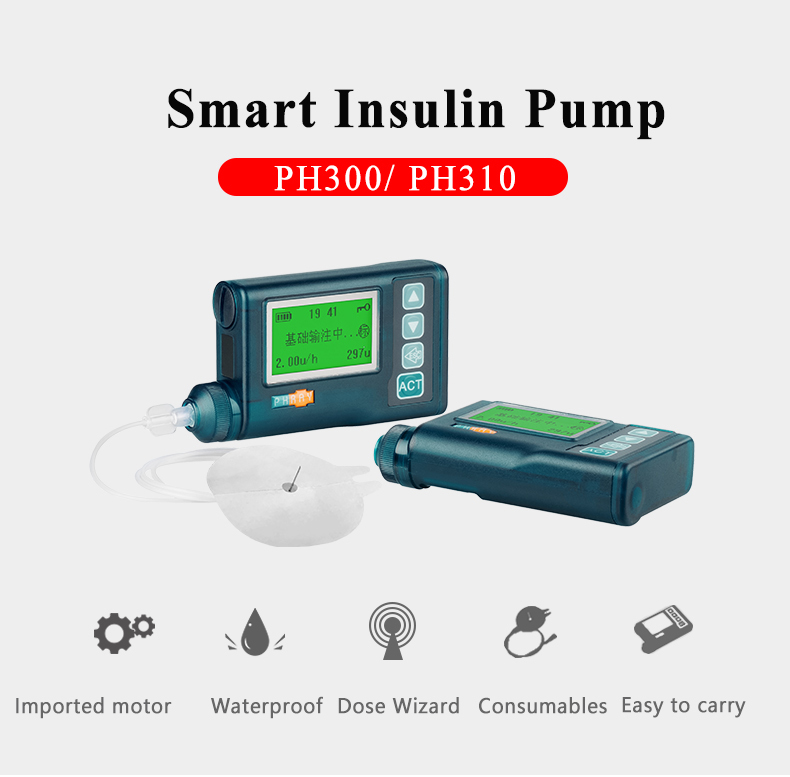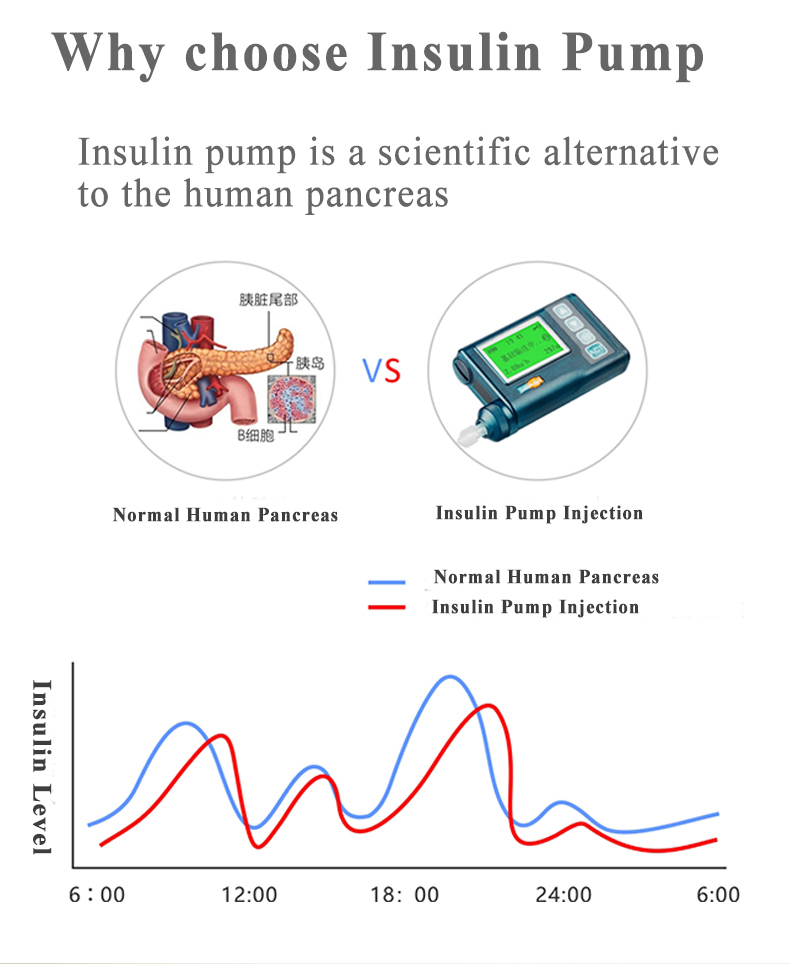What Are Insulin Pumps?
2019-07-23 15:31:28
Everyone with type 1 diabetes and many people with type 2 need to take insulin to manage their blood sugar levels. For now, there are two options: injecting it with a needle or pen, or using an insulin pump.
An insulin pump is a small computerized device. It delivers insulin through a thin tube that goes under your skin.

How an Insulin Pump Works
The device releases insulin almost the way your body naturally would: a steady flow throughout the day and night, called basal insulin, and an extra dose at mealtime, called a bolus, to handle rising blood sugar from the food you eat. You program the pump for both basal and bolus doses. If you eat more than normal, you can program a larger bolus to cover the carbs in your food. A bolus can bring down high blood sugar at other times, too.
The pump is about the size of a smartphone. You attach it to your body using an infusion set: thin plastic tubing and either a needle or a small tapered tube called a cannula you put under the skin. The place where you put it in -- your belly, buttock, or sometimes thigh -- is called the infusion site. Some pumps come with inserters for easier placement even in hard-to-reach areas.
Insulin pumps use short-acting and rapid-acting insulin, but not long-acting, since the pump is programmed to deliver a small amount continuously to keep your blood sugar levels even.

Advantages of an Insulin Pump
You’ll need fewer needle sticks. A pump requires one shot every few days when you change your infusion set.
A pump is more accurate than shots, helping you better manage blood sugar levels.
You’ll have fewer blood sugar lows, which is important if you often have hypoglycemia.
It may improve your A1c levels.
Dosing for meals and snacks is easier.
It’s easier to plan for exercise.
It’s easier to bolus.
It helps manage early morning high blood sugar, also called the “dawn phenomenon.”
One thing to keep in mind: You’ll always need to have regular injectable insulin on hand in case the pump stops working.

Disadvantages of an Insulin Pump
You’ll need to enter information into the pump all day and change out the infusion set every few days.
You’ll need to commit to using it safely, including checking your blood sugar to make sure the pump is working right. Otherwise, you risk a life-threatening problem called diabetic ketoacidosis (DKA).
You’ll need training to learn to use the pump, which means several visits with your health care team or a full day of outpatient training.
Pump supplies can be expensive.
An insulin pump may not be right for you if:
You don’t want to wear a device that lets people know you have diabetes.
You don’t like the feeling of wearing a device.
You’re not comfortable operating the pump.
You don’t want to check your blood sugar at least four times a day.
You’re not sure you want to do the work to figure out insulin dosing, carbs, and physical activity.

Which Pump Is Best?
All insulin pumps have benefits and drawbacks. Your choice will depend on what’s most important to you. Do you want an easy setup? Low up-front cost? Ease of use? Since most insurance companies will replace your pump only after several years of use, it’s important to find one that works for you.


